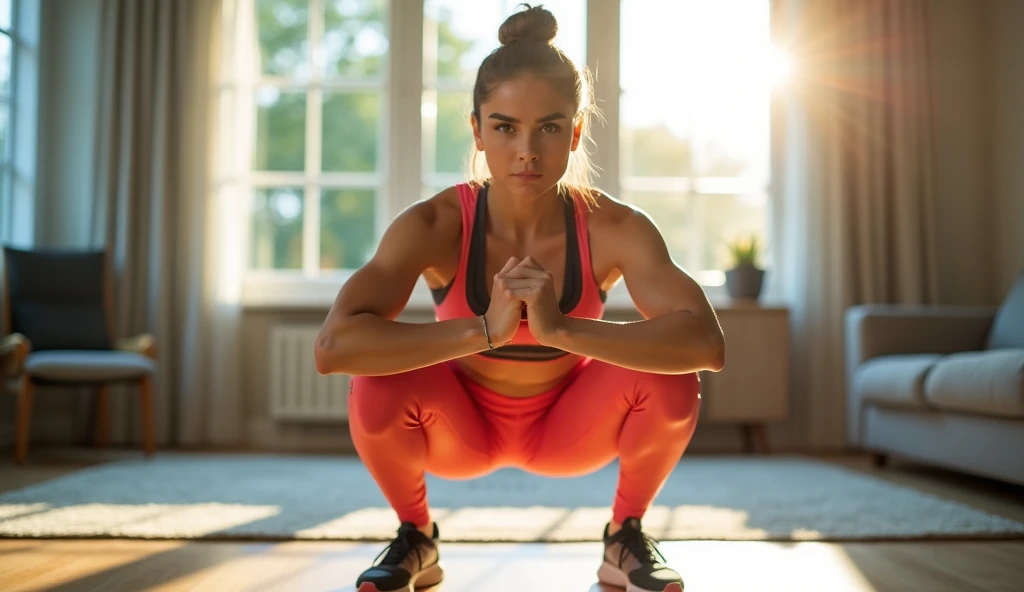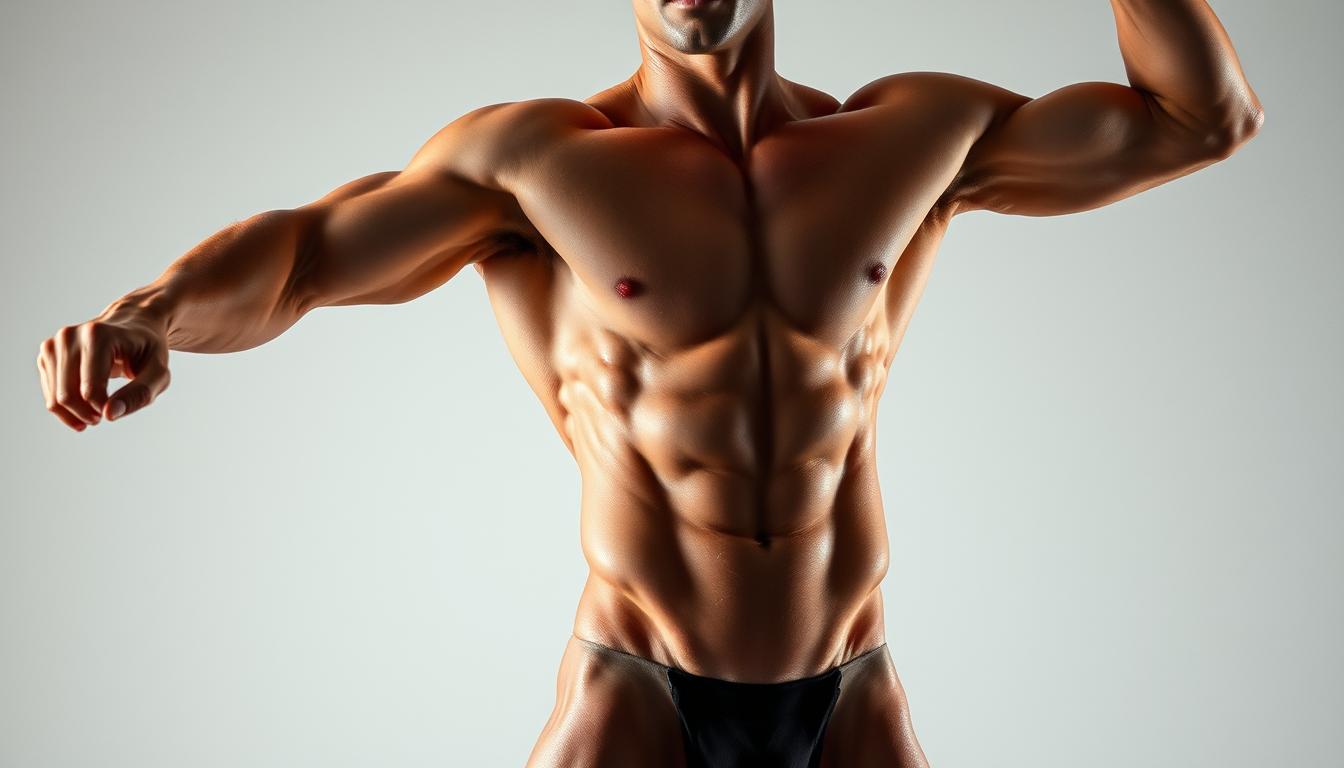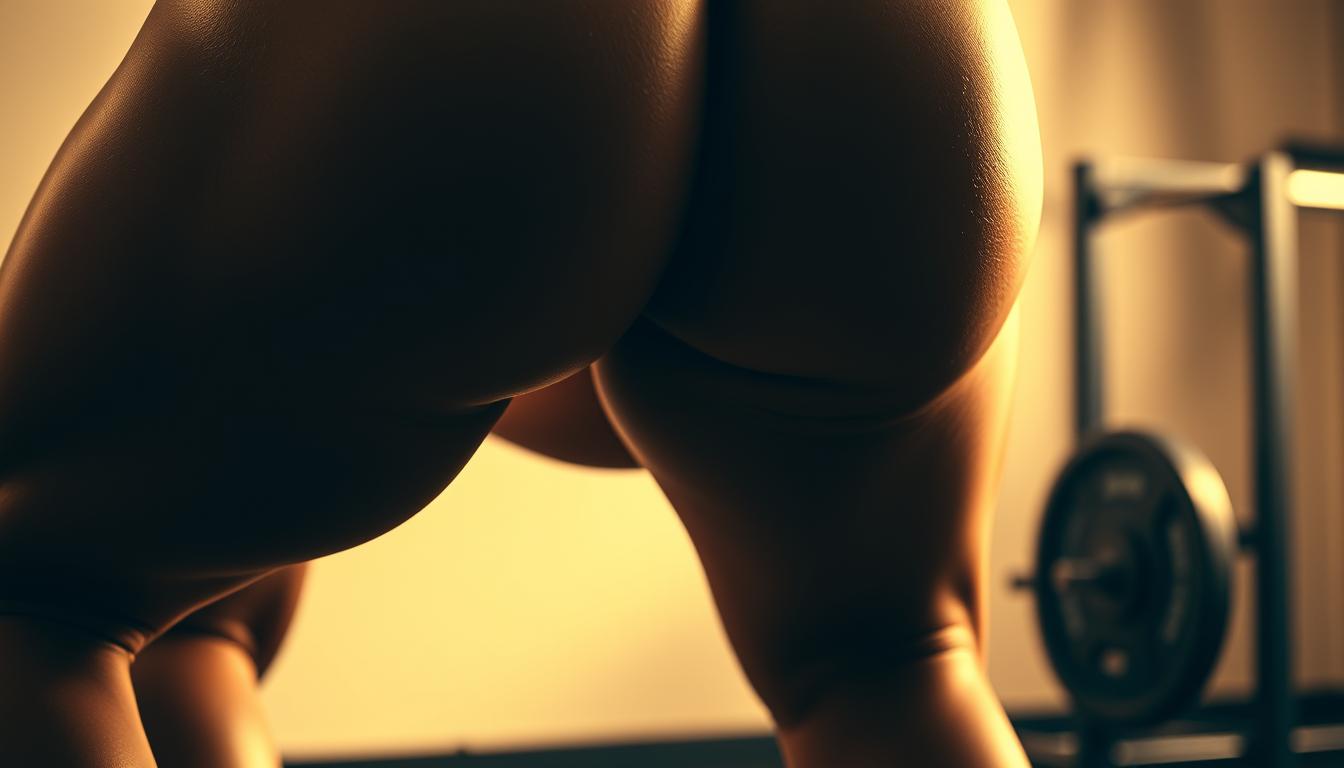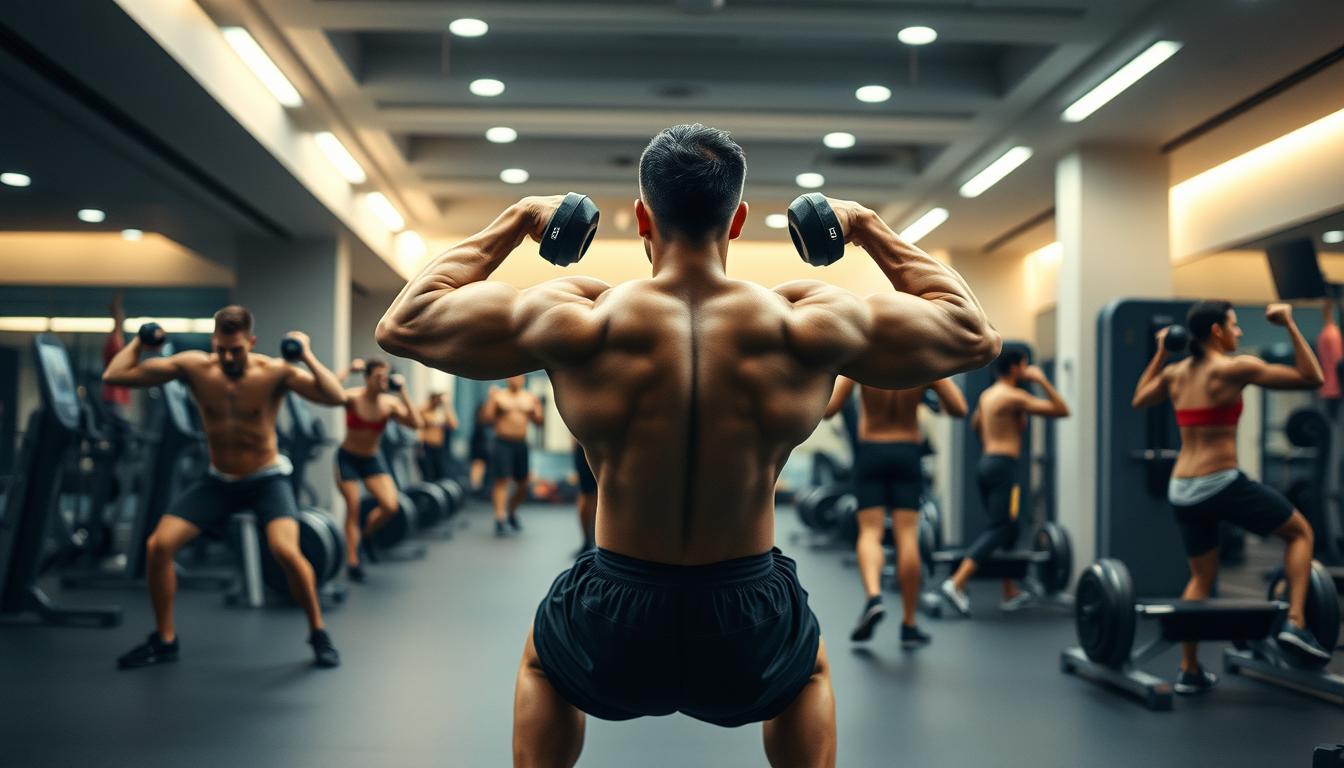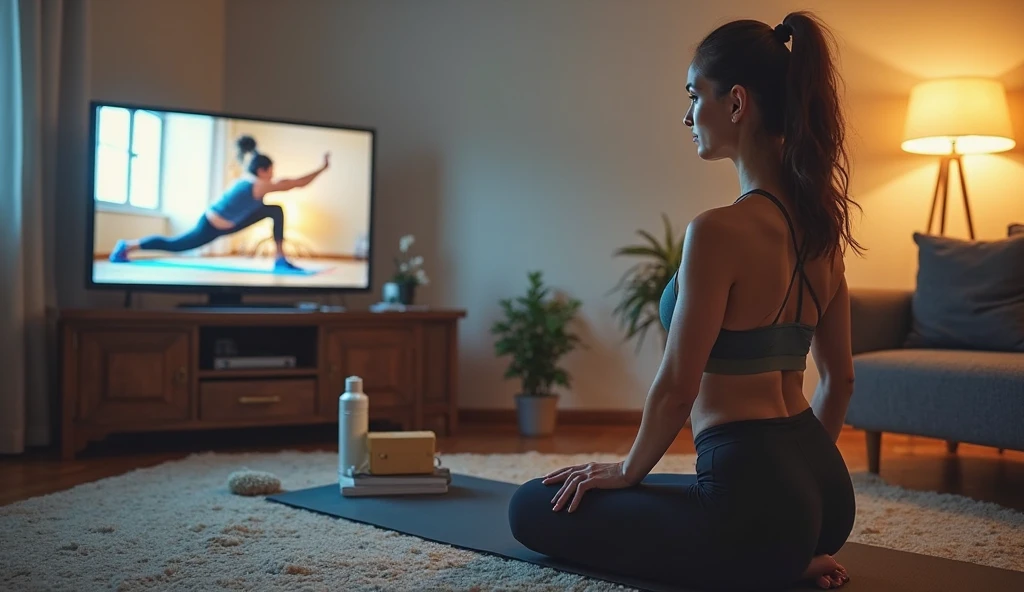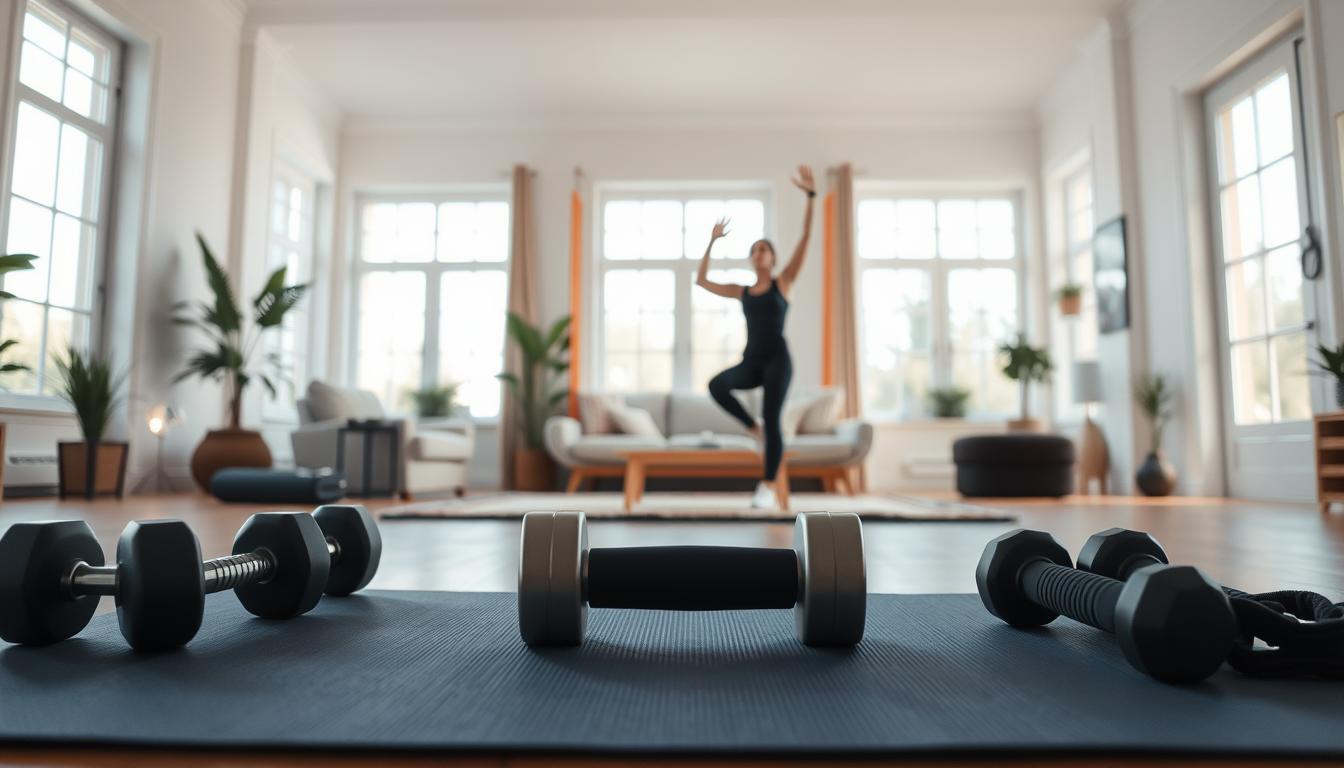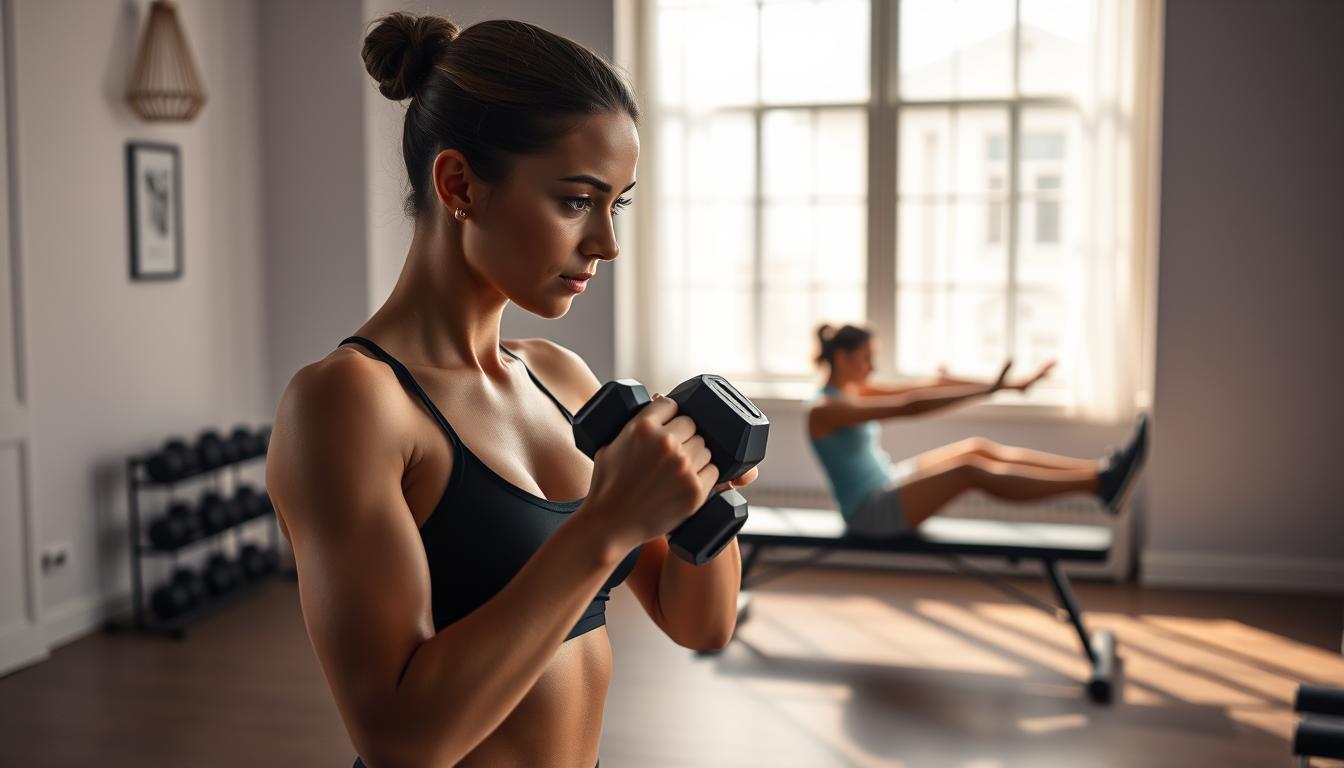Have you ever thought about how much your legs do for you every day? From walking to balancing, they’re the foundation of your movement. Strong legs not only make daily tasks easier but also boost your confidence and overall health.
You don’t need a gym membership or fancy equipment to achieve this. Simple, at-home routines can help you build strength and tone your lower body. Movements like squats and lunges target key muscles, improving your balance and agility.
In this article, I’ll share practical tips and routines you can do in the comfort of your home. Whether you’re a beginner or looking to switch up your routine, these methods are designed to fit seamlessly into your lifestyle.
Key Takeaways
- Strong legs support everyday activities like walking and balancing.
- At-home workouts are effective and require no gym equipment.
- Squats and lunges are key movements for lower body strength.
- Leg workouts improve agility, balance, and overall mobility.
- Regular routines can boost confidence and enhance daily life.
Benefits of Leg Workouts for Everyday Fitness
Strong legs are essential for maintaining mobility and stability in everyday life. They support your body in countless activities, from walking to climbing stairs. A dedicated leg routine can make these tasks easier and more efficient.
Everyday Functional Movements
Your legs play a key role in functional movements like bending, squatting, and lifting. Strengthening these muscles improves your ability to perform daily tasks with ease. It also reduces the risk of injury during routine activities.
For example, stronger leg muscles make walking smoother and more controlled. Over time, you’ll notice improvements in your posture and cadence. These changes enhance your overall quality of life.
Improved Balance and Coordination
Leg workouts don’t just build muscle—they also enhance your balance and coordination. Movements like lunges and squats engage your core, helping you stay steady on your feet.
Better balance reduces the risk of falls, especially as you age. It also supports athletic performance and everyday movement. Consistent training ensures your body stays aligned and functional.
By focusing on your legs, you’re investing in long-term fitness and mobility. These benefits go beyond appearance, contributing to a healthier, more active lifestyle.
Understanding Leg Muscles and Their Role
The lower body is a complex system of muscles working together seamlessly. These muscles not only support movement but also play a vital role in stability and balance. Knowing how they function can help you design more effective workouts and prevent injuries.
⏳ Get Your Energy Back with Discount!
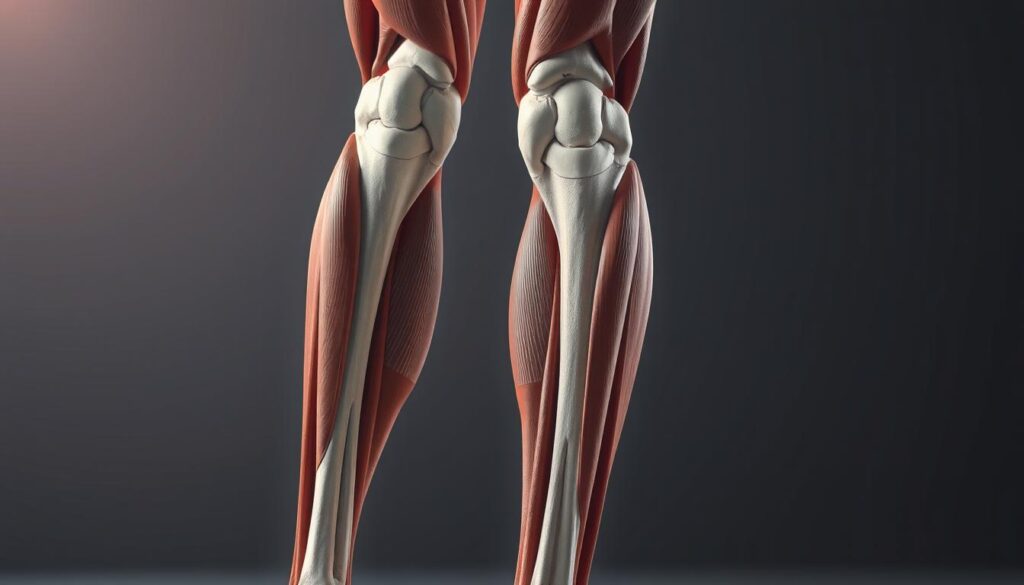
Major Muscle Groups in the Lower Body
Your legs are made up of several key muscle groups, each with a specific function. The glutes, or buttocks, are the largest and strongest muscles in the body. They help with hip extension and rotation, making them essential for activities like climbing stairs or running.
The quadriceps, located at the front of the thigh, consist of four muscles. They work together to straighten the knee and are crucial for movements like kicking and jumping. On the back of the thigh, the hamstrings bend the knee and move the hips backward. These muscles are often prone to strains, so strengthening them is key.
The Role of Glutes, Quads, and Hamstrings
Each muscle group in the lower body has a unique role. The glutes stabilize your pelvis and support your posture. Strong glutes can improve your performance in activities like squats and lunges.
The quads are essential for knee stability and leg extension. They’re heavily engaged during activities like cycling or jumping. Meanwhile, the hamstrings work in tandem with the quads to ensure smooth, controlled movements.
Understanding these roles allows you to target specific muscles more effectively. For example, focusing on your hamstrings can improve your balance and reduce the risk of injury during high-intensity workouts.
- Glutes: Stabilize the pelvis and support hip movement.
- Quads: Straighten the knee and support leg extension.
- Hamstrings: Bend the knee and move the hips backward.
By strengthening these muscle groups, you’ll not only enhance your performance but also improve your overall mobility and posture. Whether you’re walking, running, or lifting, your legs rely on these muscles to keep you moving efficiently.
Top Exercises for Toned Legs
Building strength in your lower body starts with the right movements. Squats, lunges, and plyometric moves are some of the most effective options. These exercises target key muscle groups, helping you achieve better balance and stability.
Squats are a foundational movement that engages your quads, hamstrings, and glutes. They’re versatile and can be modified for beginners or advanced fitness levels. Lunges, on the other hand, focus on unilateral strength, improving coordination and muscle tone.
Plyometric moves like jumps add an explosive element to your workout. They boost power and endurance while keeping your routine dynamic. Whether you’re new to fitness or looking to challenge yourself, these movements are adaptable and effective.
Here’s why these are considered the best exercises for your lower body:
- Squats build overall strength and stability.
- Lunges enhance balance and target specific muscles.
- Plyometric moves increase power and cardiovascular health.
Incorporating these into your routine ensures a well-rounded approach to lower body strength. Start with basic variations and progress as you build confidence and endurance.
At-Home Squats and Variations
Squats are a versatile movement that can transform your lower body strength. They engage multiple muscle groups, including the quads, hamstrings, and glutes. Whether you’re a beginner or advanced, there’s a squat variation for every fitness level.
🌟 Boost Your Well-Being Today!
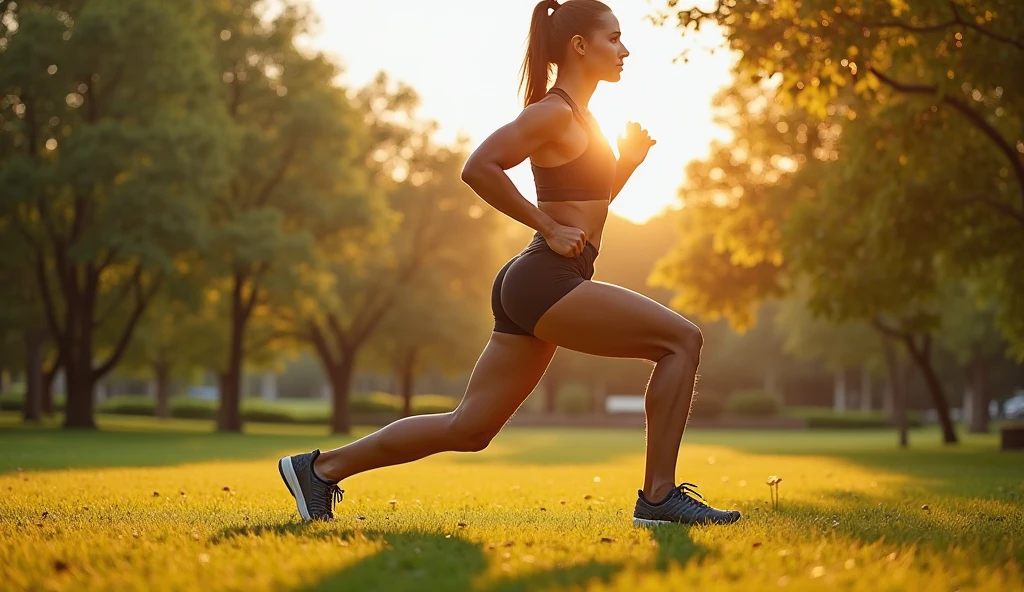
Classic Squats for Beginners
Start with the basic squat to build a strong foundation. Stand with your feet shoulder-width apart. Lower your body by bending your knees and pushing your hips back. Keep your chest up and ensure your knees don’t extend past your toes.
This movement targets your quads and glutes while improving balance. For extra support, use a chair or wall. Aim for 10-15 repetitions to start. Proper form is key to avoiding strain on your back and knees.
Advanced Squat Modifications and Supports
Once you’ve mastered the basics, try adding weight or advanced variations. Goblet squats involve holding a dumbbell at your chest. This adds resistance while keeping the movement safe for your back.
For a challenge, attempt single-leg squats or jump squats. These variations increase intensity and engage your core. Always prioritize form to prevent injury. Gradually increase reps or weight as you build strength.
| Squat Variation | Target Muscles | Repetitions |
|---|---|---|
| Classic Squat | Quads, Glutes | 10-15 |
| Goblet Squat | Quads, Glutes, Core | 10-12 |
| Jump Squat | Quads, Glutes, Calves | 10-12 |
| Single-Leg Squat | Quads, Glutes, Hamstrings | 8-10 per leg |
Incorporating these variations into your routine ensures a well-rounded approach to lower body strength. Focus on maintaining proper posture and gradually increasing intensity. Squats are a best exercise for building functional strength and stability.
Effective Lunges and Deadlift Variations
Enhancing lower body strength goes beyond squats—lunge and deadlift variations are game-changers. These movements not only sculpt your legs but also improve balance and stability. Whether you’re a beginner or advanced, these exercises can be tailored to your fitness level.
Reverse Lunges for Balance and Strength
Reverse lunges are a fantastic way to build strength while minimizing stress on your knees. Step one foot back, lowering your body until both knees form 90-degree angles. This lunge variation targets your glutes, hamstrings, and quads while improving coordination.
For added intensity, hold dumbbells or a kettlebell. Focus on keeping your chest upright and your core engaged. This ensures proper form and maximizes the benefits of the movement.
Single-Leg Deadlifts for Stability
Single-leg deadlifts are excellent for targeting your hamstrings and glutes while enhancing stability. Stand on one leg, hinge at the hip, and lower your torso while extending the other leg behind you. This deadlift variation also engages your core, making it a full-body exercise.
Start with body weight and progress to holding weights as you gain confidence. Proper form is crucial to avoid strain on your lower back. These deadlifts complement squats and lunges, offering a well-rounded lower body workout.
By incorporating these variations into your routine, you’ll build strength, improve balance, and reduce the risk of injury. Focus on form and gradually increase intensity for the best results.
Power-Packed Plyometric and Explosive Moves
Plyometric moves are a dynamic way to boost your lower body power. These high-intensity jumps target fast-twitch muscle fibers, enhancing speed and agility. Whether you’re an athlete or a fitness enthusiast, these exercises can take your performance to the next level.
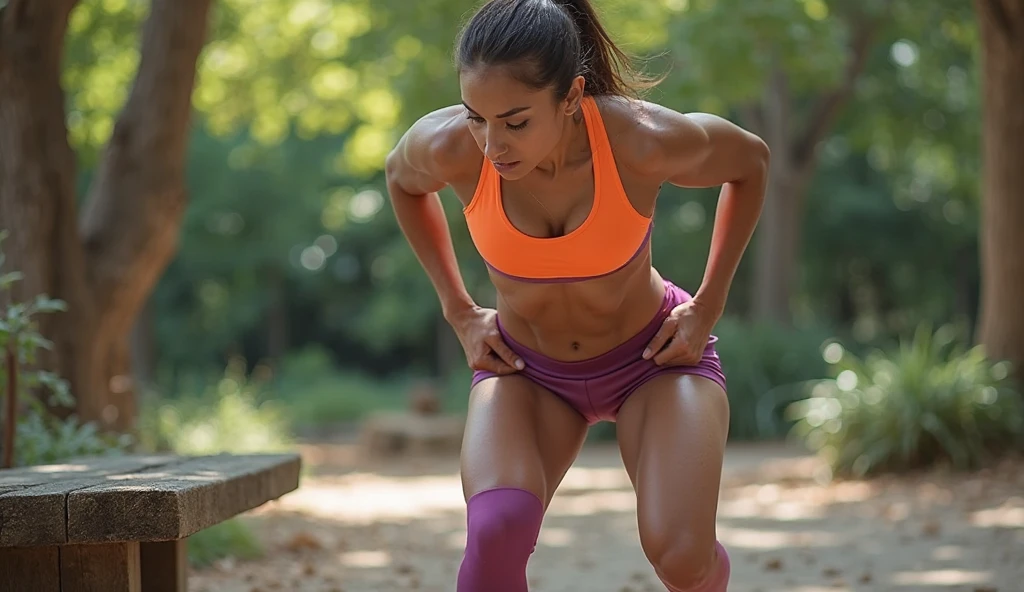
Box Jumps for Explosive Power
Box jumps are a classic plyometric exercise that builds explosive strength. Start by standing in front of a sturdy box or platform. Bend your knees slightly, then jump onto the box, landing softly with both feet. Keep your chest up and knees aligned to protect your joints.
Proper landing mechanics are crucial. Aim to land quietly, absorbing the impact through your legs. This reduces stress on your knees and ankles. Beginners can start with a lower box and gradually increase height as they gain confidence.
Speedskater Jumps for Lateral Movement
Speedskater jumps are excellent for improving lateral agility and power. Begin in a slight squat position. Jump sideways, landing on one foot while swinging the opposite leg behind you. Alternate sides with each jump, mimicking the motion of a speed skater.
This move engages your glutes, quads, and hamstrings while enhancing balance. For added intensity, hold light weights or increase the speed of your jumps. Focus on controlled movements to maximize benefits.
These explosive exercises not only build strength but also increase metabolism. They’re a time-efficient way to improve athletic performance and overall fitness. Start with 3-5 reps per set, gradually increasing as your endurance improves.
Incorporating Stability and Balance in Leg Workouts
Balancing strength and stability is key to effective lower body training. While building muscle is important, improving balance ensures you move efficiently and reduce injury risk. Simple moves like step-ups and resistance band leg presses combine strength training with stability, making them perfect for home workouts.
Step-Ups for Strength and Stability
Step-ups are a practical way to build leg strength while improving balance. This movement mimics a one-legged squat, engaging your quads, hamstrings, and glutes. Start by standing in front of a sturdy platform or bench. Step one foot onto the platform, then push through your heel to lift your body up.
Keep your chest upright and your core engaged throughout the movement. Lower yourself back down with control. This exercise not only strengthens your legs but also enhances coordination. For added intensity, hold dumbbells or increase the height of the step.
Resistance Band Leg Presses for Targeted Training
Resistance bands are a versatile tool for intensifying leg workouts without heavy weights. Leg presses with bands replicate the motion of a machine, targeting your quads, hamstrings, and glutes. Secure the band around a sturdy object and loop it around your foot. Press your leg forward against the resistance, then slowly return to the starting position.
This exercise allows you to control the tension, making it suitable for all fitness levels. Focus on maintaining proper position to avoid strain on your knees and hips. Resistance bands are an excellent way to add variety to your routine while improving stability.
| Exercise | Target Muscles | Repetitions |
|---|---|---|
| Step-Ups | Quads, Hamstrings, Glutes | 10-12 per leg |
| Resistance Band Leg Presses | Quads, Hamstrings, Glutes | 12-15 per leg |
Incorporating these moves into your routine ensures a well-rounded approach to lower body training. Focus on proper form and gradually increase intensity for the best results. By combining strength and stability, you’ll build functional fitness that supports everyday activities.
Core Integration and Functional Leg Moves
Engaging your core during leg workouts can significantly enhance your overall strength and stability. Your core acts as a stabilizer, supporting your lower body and improving the effectiveness of each movement. By combining core-focused exercises with leg training, you’ll build functional fitness that benefits daily activities.
Plank Leg Lifts for Dynamic Stability
Plank leg lifts add a dynamic element to traditional planks. Start in a plank position with your body in a straight line. Lift one leg off the ground, keeping it straight and engaging your glutes. Lower it back down and alternate sides.
This move not only strengthens your legs but also challenges your core stability. It’s an excellent way to improve balance and coordination while targeting multiple muscle groups.
Glute Bridges for Strength and Activation
Glute bridges are a powerful exercise for activating your glutes and hamstrings. Lie on your back with your knees bent and feet flat on the floor. Lift your hips by squeezing your glutes, forming a straight line from shoulders to knees.
Focus on maintaining proper form to maximize activation. This bridge variation also engages your core, making it a full-body exercise. It’s perfect for improving posture and reducing strain on your lower back.
- Plank leg lifts enhance stability and target multiple muscle groups.
- Glute bridges activate the glutes, hamstrings, and core.
- Combining these moves creates a functional workout for daily activities.
By integrating these exercises into your routine, you’ll build strength, improve stability, and reduce the risk of injury. Focus on proper form and gradually increase intensity for the best results.
Stretch Routines to Enhance Leg Flexibility
Stretching is often overlooked, but it’s a game-changer for improving flexibility and preventing injuries. After a workout, your muscles are warm and more receptive to stretching. This helps lengthen tight muscles, improve range of motion, and reduce soreness.
Incorporating a consistent stretching routine can also enhance your balance and posture. It’s not just about flexibility—it’s about creating a foundation for better movement and recovery. Let’s dive into some effective stretches you can add to your routine.
Yoga-Inspired Poses for Lengthening Muscles
Yoga-inspired poses are excellent for targeting tight muscles in your legs and hips. Downward-Facing Dog is a classic pose that stretches your calves, hamstrings, and lower back. Start on your hands and knees, then lift your hips upward, forming an inverted V shape.
Chair Pose is another great option. Stand with your feet together, then lower your hips as if sitting in a chair. This pose engages your quads and glutes while improving balance. Hold each pose for 30 seconds to maximize benefits.
Seated Toe Touches for Thigh and Calf Stretches
Seated toe touches are a simple yet effective way to stretch your thighs and calves. Sit on the floor with your legs extended straight in front of you. Reach forward toward your toes, keeping your back straight. This stretch targets your hamstrings and calves, improving flexibility over time.
For a deeper stretch, flex your feet and hold the position for 30 seconds. Remember to breathe deeply and avoid bouncing. Consistency is key—practice this stretch regularly to see noticeable improvements.
| Stretch | Target Area | Duration |
|---|---|---|
| Downward-Facing Dog | Calves, Hamstrings, Lower Back | 30 seconds |
| Chair Pose | Quads, Glutes | 30 seconds |
| Seated Toe Touches | Hamstrings, Calves | 30 seconds |
Stretching after a workout isn’t just about flexibility—it’s about recovery and injury prevention. By incorporating these stretches into your routine, you’ll improve your range of motion, reduce muscle tension, and enhance overall mobility. Start today and feel the difference!
Nutrition and Recovery Strategies for Leg Gains
Fueling your body with the right nutrients and recovery practices is essential for maximizing leg strength and performance. Proper nutrition supports muscle repair, while effective recovery techniques prevent injury and enhance long-term gains. Let’s explore how hydration, diet, and recovery strategies can optimize your leg workouts.
Hydration, Caloric Intake, and Balanced Diet
Hydration plays a key role in muscle function and recovery. Drinking enough water ensures your muscles stay flexible and reduces the risk of cramps. Aim for at least 8-10 glasses daily, especially on workout days.
Caloric intake is equally important. To build muscle, you need a slight caloric surplus. Focus on nutrient-dense foods like lean proteins, whole grains, and healthy fats. Protein is crucial—aim for 1.6 to 2.2 grams per kilogram of body weight daily.
Post-Workout Recovery and Foam Rolling Techniques
Recovery is where your muscles grow stronger. After a workout, prioritize rest and active recovery techniques. Foam rolling is a great way to ease joint tension and improve blood flow. Focus on areas like your quads, hamstrings, and calves.
Schedule rest periods between workouts to allow your body to heal. For example, take 30-60 seconds of rest between sets during training. This ensures your muscles recover fully for the next session.
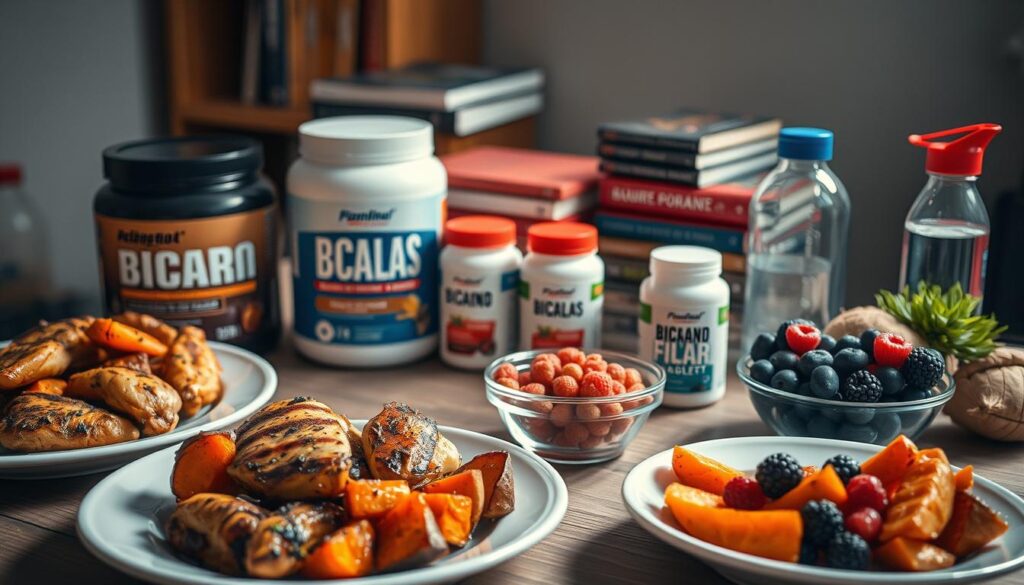
| Recovery Strategy | Benefits | Time/Duration |
|---|---|---|
| Hydration | Improves muscle function and flexibility | 8-10 glasses daily |
| Protein Intake | Supports muscle repair and growth | 1.6-2.2g/kg body weight |
| Foam Rolling | Reduces joint tension and soreness | 5-10 minutes post-workout |
| Rest Periods | Allows muscles to recover fully | 30-60 seconds between sets |
By combining proper nutrition with effective recovery strategies, you’ll enhance your leg strength and reduce the risk of injury. Focus on consistency and gradual progress for the best results.
Simple Tips to Boost Your Leg Day Routine
Small changes in your routine can make a big difference in your performance and recovery. Whether you’re a beginner or a seasoned fitness enthusiast, these tips will help you get the most out of your leg day.
Compression Leggings and Active Rest Periods
Wearing compression leggings can improve circulation and speed up recovery. These garments provide support to your muscles, reducing soreness after intense workouts. They’re especially helpful during long day sessions or when you’re pushing your limits.
Active rest periods are another game-changer. Instead of sitting still between reps, try light movements like walking or stretching. This keeps your blood flowing and prevents stiffness. It’s a simple tip that can enhance your overall performance.
Modify Your Routine for Better Results
Your routine should adapt to your recovery needs and goals. If you’re feeling fatigued, reduce the number of reps or focus on lighter weights. On days when you’re energized, challenge yourself with advanced variations.
Paying attention to your form at the start of each exercise is crucial. Proper alignment ensures you’re targeting the right muscles and reduces the risk of injury. Small adjustments can lead to significant improvements over time.
Stand Up and Move Often
If you spend long hours sitting, make it a habit to stand up and move around. This keeps your foot and leg muscles active, preventing stiffness and improving circulation. Even a quick walk to the other side of the room can make a difference.
By incorporating these strategies into your routine, you’ll optimize your leg day and see better results. Remember, consistency is key. Start small, stay focused, and watch your progress grow.
Conclusion
Your lower body plays a vital role in how you move, balance, and perform daily tasks. By focusing on targeted movements, you can build strength in key muscle groups like the hamstrings and quads. This not only enhances your physical performance but also supports overall health.
Proper technique and recovery are essential to maximize your results. Always make sure your form is correct to avoid injury. Pair your workout with a balanced diet and hydration to fuel your body and aid recovery.
Integrate these strategies into your routine for lasting benefits. Start small, stay consistent, and watch your progress grow. With dedication, you’ll see impressive improvements in both strength and balance.

